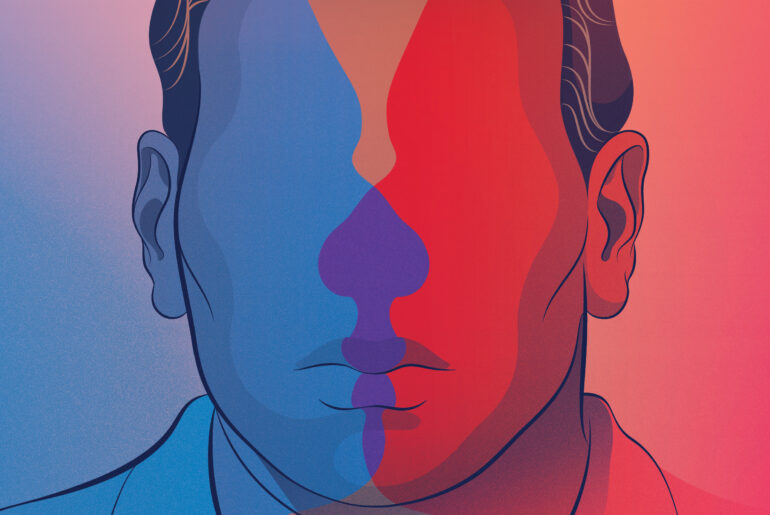Liz Alarcón: We’re back. Welcome to season four of the Pulso Podcast.
Maribel Quezada Smith: Hola, hola. Bienvenidos y bienvenidas, ya estamos de regreso.
Liz Alarcón: We’re so excited. We’ve been hard at work with our heads down, producing really interesting episodes that will continue to share the untold stories and unheard voices that make up our Latino history and our culture. And as we were thinking about what we wanted to talk about, we kept coming back to one topic in particular, Maribel.
Maribel Quezada Smith: And that topic is the hot topic of beauty standards. Maybe it’s not an overt conversation like, oh, let’s talk about beauty standards. But it’s always there. It’s always the subtext in every conversation around family gatherings, how you look, how you show up, what you’re wearing, how you’re dressing. Are you gaining weight, losing weight, like there’s a lot of emphasis on beauty in our Latino community.
Liz Alarcón: And there’s just so much to say, right, Maribel? I mean, when we were starting to brainstorm the episodes for this season, this conversation on Latina beauty standards just came up naturally and we kept talking and talking and sharing our own experiences and so we were like, of course, we have to dig deeper into this topic on the podcast. So what you all are about to hear is a two-part series where we unpack not only the impacts that these beauty standards have on our Latinidad, but really interrogating, Maribel, where do these beauty standards even come from? We have so much to cover in this episode, so let’s jump right into it.
Maribel Quezada Smith: You’re listening to the Pulso Podcast. We’ll be right back.
Liz Alarcón: “Antes muerta que sencilla!” “I’d rather be dead than caught, not looking my best.” So many of us have grown up listening to our moms, our grandmas, our tias. Saying that same phrase to be Latina is to have some expectation either from your family or from the rest of the world that beauty matters. What exactly is beautiful to a Latina voluptuous yet? Tan skin, but no darker than caramel. Hair is long. Yeah, definitely long. A mix of pursuing thinness while also appreciating the curvy body type and of being white, but never too white.
We weren’t just born with this idea of Latina beauty, though we were socialized to believe it. To help us unpack how these conflicting standards of beauty came to be, we invited Dr. Mora to the Pulso podcast.
Dr. Cristina Mora: My name is Cristina Mora, and I’m associate professor of Sociology and Chicano Latino studies at UC Berkeley.
Liz Alarcón: So the first question for you, Dr. Mora, would be, how would you even define Latina beauty standards?
Dr. Cristina Mora: When I think about Latina beauty, I think of there’s always a relationship to others. Latino beauty is defined in relation often in the United States to white standards of beauty especially, but also Black standards of beauty or non-Latino, Black standards of beauty, and other forms of beauty that we see worldwide. And so I think the Latino style is always an interplay. Between all of these four.
On the one hand you have this historical legacy of, uh, colonialism in the Americas, that prioritizes European descent. And at the bottom of the hierarchy, we generally have some mix of Indigenous and African ancestry.
Liz Alarcón: So to reach the Latina beauty standard is essentially a constant exhausting negotiation between so many different factors. But at the end of the day, the winning narrative seems to be that the closer we are to being white, the better. All you have to do is turn on las novelas on Univision and Telemundo and you’ll know exactly what I’m talking about. Straighter hair, lighter skin, lighter eyes. That’s mostly what we see coming out of Mexican, Colombian, Venezuelan, Peruvian, and other Latin American media that we consume here in the US. Few of los personajes are Indigenous or Black, and the ones who are definitely don’t get the guy or the big job at the end. They’re relegated to the roles of criminals or the help. Like Dr. Mora said, anything not white is at the bottom of the beauty hierarchy. She goes on to explain that there’s another topic at play.
Dr. Cristina Mora: When we’re talking about sort of US Latino understandings there’s a way in which sort of the ideas of Latin America filter into the way we live our lives here. And there’s also at the same time a sense of resistance, a sense of wanting to define ourselves on our own terms, right? And so historically you’ve seen things like a resistance to sort of speaking English the exact same way, wearing your hair the exact same way as a quote unquote white girls. Um, wanting to exalt what is a Chicano culture, a Boricua culture, uh, different forms of sort of subcultural resistance.
Liz Alarcón: What are some of those aesthetic traits that you think the Hispanic or Latino or Chicano label in the US highlights, and what are some of those traits that those same labels of how we see ourselves in the US context, actually erase?
Dr. Cristina Mora: I think it looks differently depending on where you’re looking at. So if I’m looking at lA In the 1980s, resistance was bigger hair. Resistance was bigger earrings. Resistance was a mode of dress with specific Nikes and press shirts and firmly crease pants or things like that. If I think about it now, LA it’s a lot about makeup that doesn’t look like white girl makeup often. It’s a lot about embracing thicker curves now much more than what you saw in sort of the nineties and stuff like that. And then you’ve got, you know, it varies by groups and education amongst some groups that are more highly educated. You find a much more embracing of Indigenous ideas, right? Indigenous patterns on clothing, Indigenous forms of naming your children, going back to learning Indigenous practices and exalting it. So I think these practices look different and they’re always intentional, like the way mainstream media wants to see who Latinos are and the ways it wants to box us in and how we can be beautiful.
As much as we can say that the creased pants and the crisp white t-shirts of the 1980 Cholo style or low rider style, that was a true aesthetic, many others saw that as a threat. Many others saw that as a danger. Many others saw that as criminalization. And so I think beauty is always in conversation with this as well.
Liz Alarcón: Another scholar who spends her time thinking about our identity is Dr. Lorena Garcia. She’s an associate professor of sociology and Latin American and Latino studies at the University of Illinois at Chicago.
Dr. Lorena Garcia: Even when we think about beauty standards, it’s not only like in terms of how it’s read on the body and how we also have agency and how we express that, but I also think it’s also in these other ways that get mapped out and the way we speak, like how much we use our hands. There is resistance to that. But it doesn’t come easy. And I do think who sort of is presented as the epitome of Latina beauty can shift. But I know that one of those tensions that consistently seems to come up quite a bit, and that rightfully so is especially the way sort of Blackness has been written out or if it’s coming in the way, it’s being commodified as a way to kind of think about what beauty looks like. So I think Latinas especially have also been kind of negotiating this way of thinking about how do we express ourselves in a way that feels authentic to us while we’re sort of navigating all these messages about we’re supposed to look like and be like.
Liz Alarcón: And let’s not forget that machismo has played a role in defining Latina beauty standards as well.
Dr. Lorena Garcia: When we think about notions of femininity, when we think about notions of masculinity, I do think, that they are kind of in some way speaking to one another. And we know obviously, that it’s much more now expansive than this gender binary of femininity, masculinity, or men and women. So I do think that, on the one hand, right, people say that, of that one way of understanding how women may be doing femininities in relation to masculinity. and the other thing is, we’re also doing our sense of femininities in relation to other women. Even when we think about femininity’s ideas about that, we’re also doing it for each other, for like our mothers, for our sisters, for our friends, the other Latinas or the other women that we’re gonna be encountering with.
Liz Alarcón: That’s interesting to explore that concept of dressing for each other. I definitely feel Latina women develop our beauty standards in an intergenerational way. Many of us learn about beauty from our moms at a young age. The love for beauty is passed down from generation to generation. In fact, according to Nielsen, 66% of Latinas say that they were taught at an early age that maintaining their appearance is important. Our mothers and grandmothers taught so many of us to take time with our self-care and to adorn ourselves like we matter. It was like their way of passing on the idea that we are worth it. My grandmother, for example, didn’t wear pants until she was in her fifties and every other week she had her personal cosmetologist come to her house to try the latest new trend in anti-aging techniques on her face. My mom would blow dry her hair even to go to the beach and was never not in heels.
I know to many, this may seem indulgent, but it feels like a badge of honor for so many Latinas to take that much time and pride in how you look. It’s almost as if our beauty regimen is one of the most powerful things that we have full control over in a world where so much is out of our control. As I reflected on this, I wanted to ask Dr. Garcia about how she would define Latina beauty standards.
Dr. Lorena Garcia: Oh gosh, the first thing that comes to mind to me is that there is no one size fits all. So that’s one way I would define it immediately. For me, it’s very diverse. I see it as about what feels right to you. Like in terms of, if what you put on on your body, if what you put on your face, if the kinds of earrings you decide you’re gonna wear. I think if that’s coming from a place of authenticity, and I think it’s also about your right to claim space. And it doesn’t evolve from me any body shaming. To me, Latina beauty standards means that we’re uplifting one another, and honoring, and respecting, what we choose to do with our bodies and what we wanna present about ourselves as what’s beautiful to each of us.
Liz Alarcón: Totally agree. I love that you, gave an empowering approach to our own agency and how we define our own beauty standards and that it is a mix of what we’ve been told by our families, what we’re seeing in mainstream American media, the influence in Latin American beauty standards with us once we come here in the US, how we wanna present to other women in our and the male gaze. It is a complex negotiation between all of those things that create this idea of what is beautiful for Latinas and Latines more broadly.
Dr. Lorena Garcia: I definitely don’t wanna minimize the fact That we’re living in a society that’s still by and large dismisses Latinas, the contributions that we bring to the table and often instead does fixate on our bodies.
Liz Alarcón: One of my other questions for you was about that difference between how we view ourselves when it comes to beauty and sexuality versus how mainstream American society sees us or how others see us. Can we even define our own sense of beauty for ourselves?
Dr. Lorena Garcia: Oh gosh. That’s a great question. I’d like to think that there is that option for us to do that. I do think that it is possible, but when I say that, we have that choice. I always say that those choices are happening under a particular set of larger structural constraints.
Liz Alarcón: So, for example, if I’m interviewing for a job, I am already thinking about the ways they’re going to read me from my race to my gender, to my class. People will judge you differently because you’re Latina. You’re never not on display. That’s why this next stat may not surprise you. According to that same Nielsen report I cited earlier, only 4% of Latinas say they would leave the house without any beauty product on versus 24% of non-Latinas. Imagínense! So while we conform to expectations and put on our best face, we’re defining our own sense of beauty too. Dr. Garcia provided some additional insights on that thought.
Dr. Lorena Garcia: I do think it’s possible to be able to define that for ourselves. But I think it’s hard to intentionally do that because we have so much coming at us about what expectations for us, and knowing that we’re already being racialized in so many ways, and that our sexuality is often perceived as hypersexual, and knowing that there’s all these stereotypes about Latinas that we’re loud, that we do too much. I think all of that sort of operates in a way that makes it hard to do.
Liz Alarcón: It is hard to do, yet as new generations come into their own, there’s big potential for change.
Dr. Lorena Garcia: One of the potentials that I see for this happening, and I know people are sometimes critical of social media and I don’t really use a lot of social media, but that is, I believe, such an important space, especially I think for younger generations, to create content that for them, is sometimes resisting those messages that they’re getting. They’re creating different kinds of stories. Stories that need to be told. And so I do feel like that there is, that this potential here and this is such a creative way to do it. There’s someone out there for instance, who’s gonna need to hear this very thing that you’re talking about because no one else is talking about it.
Liz Alarcón: Caring about beauty is the one stereotype that Latinas are embracing and making our own. Looking beautiful makes many Latinas feel like they can take on anything, whether it’s as a stay-at-home mom or a career woman, high beauty standards can be limiting, but our own definition of beauty is also empowering, and that’s exactly why we wanted to make this episode. Knowing the origins of how we got to defining beauty as we do helps us decide what standards we want to keep and what outdated standards we want to do away with. In the next episode of this two-part series, we take the conversation beyond the theory to the practice. Maribel will be exploring the positive and problematic ways our beauty standards show up for us in the world today.
This episode was produced by me, Liz Alarcón and Jackie Noack from the Pulso team. Audio Engineering by Charlie Garcia and Julian Blackmore. Music by Julian Blackmore.




